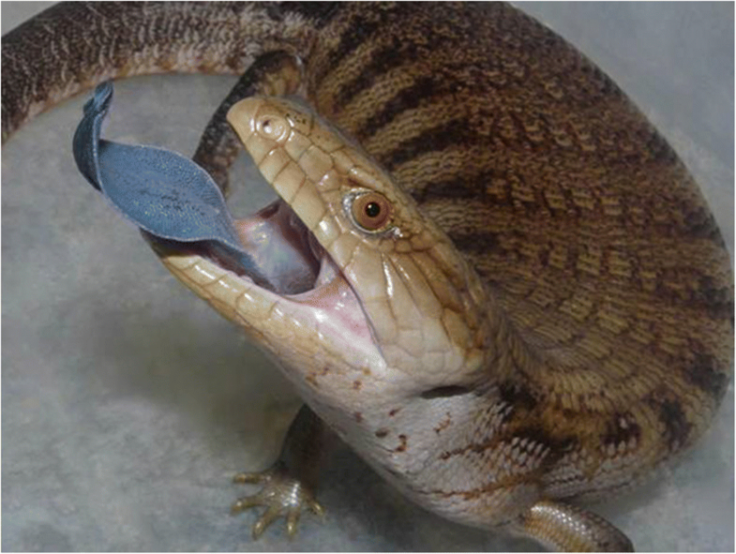This Lizard's Blue Tongue Turns Ultraviolet To Scare Off Predators

Blue-tongued skinks, also known as a blue-tongued lizards, are now part of an important research due to the ultraviolet-reflective nature of their tongue. These creature have often startled researchers but a new study shows their tongues are much more than what they appear to be.
In the new study, researchers analyzed how the lizard uses its tongue as a warning to predators. The researchers published their findings Thursday in the Behavioral Ecology and Sociobiology journal.
They found “the back of the northern blue-tongue skink's tongue is much more UV-intense and luminous than the front.” This feature was useful as a defense against main predators, such as birds, snakes, and monitor lizards.
The skinks, which are found across Australia, Indonesia and Papua New Guinea, are camouflaged, thus the use of the tongue adds as a last survival attempt.
“The lizards restrict the use of full-tongue displays to the final stages of a predation sequence when they are most at risk, and do so in concert with aggressive defensive behaviors that amplify the display, such as hissing or inflating their bodies,” lead author Arnaud Badiane said in a statement. “This type of display might be particularly effective against aerial predators, for which an interrupted attack would not be easily resumed due to loss of inertia.”
“The timing of their tongue display is crucial,” added Badiane. “If performed too early, a display may break the lizard's camouflage and attract unwanted attention by predators and increase predation risk. If performed too late, it may not deter predators.”
The research was conducted after measuring the tongues of 13 skinks. Simulated attacks were carried out on skinks using fake predators. During this time, it was found the back of the tongue was twice as bright as its tip.
Researchers found the more intense and risky the attack, the more prominent the full-tongue display was by the lizards. These displays were mostly triggered during attacks from birds and foxes rather than by snakes or monitor lizards.
“We suspect that such a highly conspicuous display deployed at close range to a predator will induce a reflexive startle response that will deter predators,” the paper said.
© Copyright IBTimes 2025. All rights reserved.





















